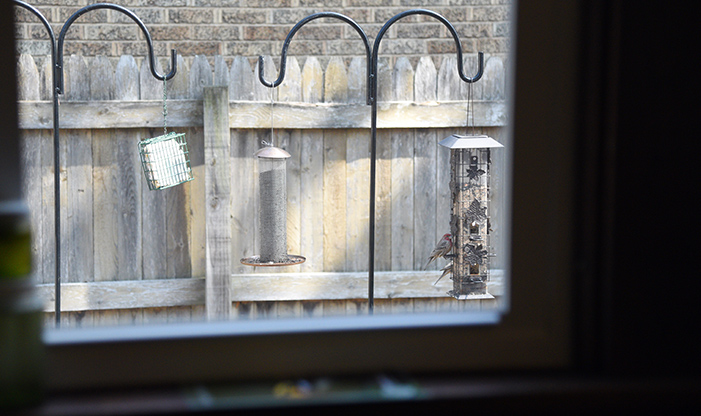No matter your age, there is something magical about filling your first bird feeder, waiting by the window, and experiencing the excitement that comes from observing your first bird visit. Bird feeding can be a fulfilling activity for you and your family to engage in, especially if you are looking for creative ways to bring nature to your home. Every bird that visits will be a fun mystery that you get to solve!
Let’s get started with a supply list and then talk about the basics.
Bird Feeding Supplies
Bird Feeder
Tree or Shepherd’s Hook for hanging the feeders
Bird Seed
Bird Guide (I keep Wisconsin Birds, A Folding Pocket Guide to Familiar Species by my window because it narrows down the species to common ones that would likely be seen in a backyard)
Basics to Bird Feeding
There are endless choices of bird feeders and bird seed out there, and it can be overwhelming if you are just getting started! Which type of feeder works for which bird? What seed am I supposed to put in which feeder? I am going to try to give you the basics and narrow down some options, starting with three types of feeders that will attract a nice variety of birds to your yard.
Tube Feeders
Tube Feeders may be what come to mind when you think of bird feeders. They are cylindrical and usually have feeding ports where a bird can perch to get seed. Tube feeders can be filled with black oil sunflower seeds or a seed blend. Tube feeders filled with sunflower seeds or a mix (usually black oil sunflower, millet, striped sunflower, and even peanuts) will attract Black-capped Chickadees, House Finches, Blue Jays, Northern Cardinal, and Mourning Dove. You can also spread some seed on the ground (beyond what falls from the feeder from the other birds) to attract Dark-eyed Juncos, and Song Sparrows, because they will usually forage on the ground.
Finch Feeders
Finch Feeders are also known as Nyjer or Thistle feeders because you fill them with Nyjer. They are also cylindrical, but are usually made of a fine mesh or can even be a fabric sock material for finches to cling to. The tiny openings prevent birds with larger bills from getting this seed. Nyjer will attract American Goldfinches and Pine Siskin.
Suet Feeders
Suet Feeders are usually small cages made of a coated wire that can hold a suet cake or two. Suet is hardened fat or beef, but some suet cakes also have fruits and nuts mixed in. These feeders will attract Downy Woodpecker, Hairy Woodpecker, Red-bellied Woodpecker, and White-breasted Nuthatches.
Placing and Maintaining Your Bird Feeder
The first thing to consider in figuring out placement for your bird feeder—is it in a place where you can enjoy watching the birds! It is recommended to place any feeders at least 10 feet from a window if possible to prevent window collisions. To stop squirrels from getting to a feeder, you may also need to consider if there is a fence or branches that a squirrel could leap from. Because they will try! There are other contraptions for keeping squirrels away including baffles, or weight-activated feeders that will close the feeding ports if a squirrel does gain access to the feeder.
It is important to keep your new bird feeders filled and clean. Fill your feeders daily if necessary. Make sure the seed doesn’t begin to clump or grow mold, especially after rainy periods. If it does, throw out the rest of the seed, wash the feeder with warm water and soap, let it dry all the way, and then refill it with new seed.
It may take a few days for birds to find a new feeding station but remain patient. Fill your feeders and get excited for your new backyard visitors!


